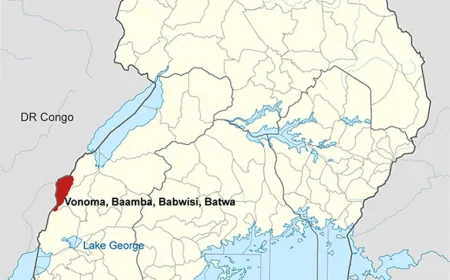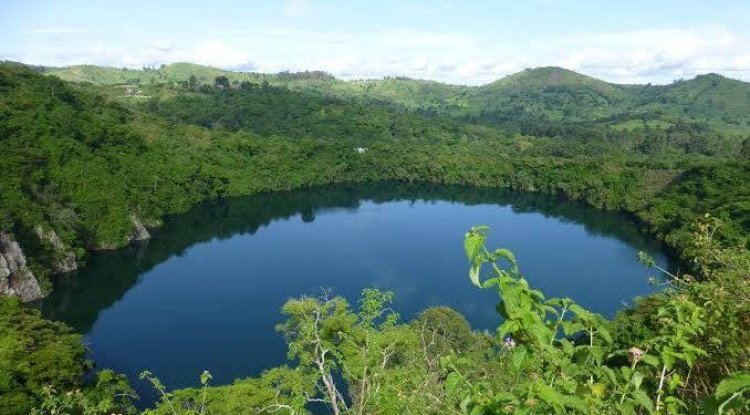Kibale Forest National Park
Kibale Forest National Park Uganda is one of the best safari destinations in Africa for chimpanzee tracking.

Kibale Forest National Park is one of the most stylish safari destinations in Africa and a major tropical rainforest in East Africa. It's one of the different premises and is substantially known for chimpanzee shadowing. It's located in southern Uganda, in a defended evergreen rain forest. It was gazetted in 1932 and established in 1993 to cover a large area of timber preliminarily managed as a logged timber reserve.
Kibale Forest National Park is an eco-tourism and safari destination for chimpanzees and other primate species. It's a 1 km hike and generally done in dry seasons. The wettest area is Northern Kibale, entering an average periodic downfall of equal to 1700 mm substantially during March-May and September-November. The climate is generally agreeable, with an average periodic temperature range of 14 to 27 °C.
Southern Kibale borders Queen Elizabeth National Park, and inclusively, these preserved areas maintain a 180-kilometer-long migration corridor for wildlife that moves from the remote southern sector of Queen Elizabeth National Park in Ishasha to the north of Kibale.
The Kibale-Fort Portal region is one of Uganda’s most pleasing places to explore.

The demesne is located near the calm Ndali Kasenda crater area, which takes a partial day’s drive to Queen Elizabeth, the Rwenzori Mountains, and Semuliki National Parks.
Position Of Kibale National Park
The location of Kibale National Park is in the western part of Uganda, about 348 km (5 hours drive) from Kampala and about 26 km south-east of the beautiful Fort Portal city, one of Uganda’s most lovely places to explore. The demesne is located near the serene Ndali Kasenda crater area, and it takes a half-day's drive to Queen Elizabeth National Park, the Rwenzori Mountains and Semuliki National Parks, and the Toro-Semliki Wildlife Reserve.
Southern Kibale borders Queen Elizabeth National Park, and inclusively, these conserved areas cover a 180-kilometer-long migration corridor for wildlife that stretches from the remote southern sector of Queen Elizabeth National Park in "Ishasha" to “ Sebitoli” in northern Kibale.
Flora and fauna within the park Kibale National Park has different kinds of territories, ranging from wettish evergreen timber along the Fort Portal Table, through the dry tropical forest, and to forestland and champaign along the Rift Valley bottom. In the central part of the forest, around Kanyachu, the high forest consists of an admixture of evergreen species. Foliage rises to over 55 meters and establishes a semi-closed cover of massive stratified tree crowns. With shade-tolerant sauces, a variety of ferns, shrubs, and broad-leaf timber meadows.
Activities at Kibale National Park
A number of visitors go to Kibale Forest for Chimpanzee tracking. The most favorite of Kibale's walks embark from the Kanyunchu caller center at 800 a.m. and 3 p.m. and last for 3 hours with a great anticipation of chancing the chimps. While on your track, the ranger will have to explain to you further about the creatures and vegetation you'll find. Chimpanzee heroinism is carried out in the forest, whereby callers stay with a particular Chimpanzee group from veritably beforehand in the morning to late evening in the timber with the companion.
You'll witness them feeding and playing while getting first-hand information from the guides. This means you'll be able to see other primates, catcalls, butterflies, and mammals. Before the exertion, you need to book for a special permit to be obtained for you from the Uganda Wildlife Authority. An original companion on a walk through the Magombe swamp wetland to enjoy the original wildlife, raspberry, and foliage. The daily life of Batooro can be discovered during village walks, including layovers at the townlets’ primary seminaries, churches, and traditional healers. Nature walks and hikes near and around Kibale Forest National Park in Uganda.
Apart from chimpanzee shadowing, Kibale Forest offers hiking, biking, and exploring crater lakes.
visiting the green tea colonies that compass the forest.
visiting the grottoes (Amabere ga Nyina Mwiru). Original people demonstrate the style of their original societies through a lively, long-hour performance. Among the Bakiga, men and women dance by stamping the ground barefooted.
the crater lakes; an observation palace; and a walk that traverses the papyrus beds. The path and walk may be swamped and muddy after heavy rain, and gumboots are recommended. They can be hired at the call centre. The walk is about 4 km in length, taking 3–4 hours at birding pace. With all proceeds from ecotourism going back into the community, this is a conservation design well worth supporting.
Accommodation options in Kibale National Park
Different people have different tastes and preferences; they've got choices of lodging that range from luxury to budget while in Kibale Forest. Under the budget range, there's Chimpanzee Guest House, Mid-range Kibale Forest Camp, Primate Lodge, Luxury Kyaninga lodge and Ndali Lodge.

- Primate Lodge Kibale – located in the middle of the forest where the chimp tracking commences, has a fascinating eatery, bar, and fireplace for affable gloamings. Medications for ultramodern bandas, luxury canopies, and a comfortable Sky Tree House are underway.
- Kanyanchu River Camp offers excellent accommodation for visitors who stay in the Sky Tree House, overlooking the spectacular giant wallow.
- The Sky Tree House accommodates two people only.
- Sebitoli Forest Centre: this bone has a capacity of 11 beds (2 doubles, 3 mates, and 2 halves).
- Mantana Luxury Tented Camp—in the middle of the forest, it’s bush-type comfortable accommodation.
- Ndali Lodge is a luxury accommodation with thatched lodges overlooking a crater lake.
- Budget lodges at Bigodi.
When To Visit Kibale National Park
Although Kibale National Park is accessible throughout the year, the best time to visit the park is during the dry season, when the trails are dry and passable. This runs from December to February and also from June to September. The wettest area in Kibale is the northern area, with an average periodic downfall of roughly 1700 mm, substantially during March to May and September to November. The climate is generally agreeable, with an average periodic temperature range of 14°C to 27°C. The southern part of the demesne has the maximum temperatures and lower quantities of rain where the terrain drops onto the hot rift valley bottom and timber provides a way to open champaign.
Getting to Kibale National Park
Drive from Kampala to Fort Portal (320 km); also take a road to Kamwenge that commences from near the bridge over the Mpanga River in Fort Portal and is well signposted.
Drive, turning left at the junction 12 km from Fort Portal, and read the signpost for another 24 km to Kanyanchu Tourist Centre.
What's Your Reaction?
 Like
0
Like
0
 Dislike
0
Dislike
0
 Love
0
Love
0
 Funny
0
Funny
0
 Angry
0
Angry
0
 Sad
0
Sad
0
 Wow
0
Wow
0













































































